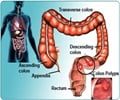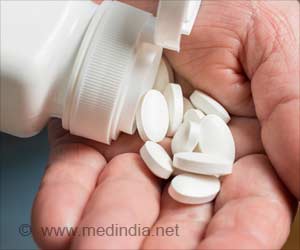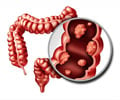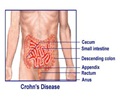New gel-like material has been developed that is capable of changing from liquid to solid-state when injected into the colon. It provides support and elevates the colon polyps to facilitate surgical removal.
- New gel-like material has been developed that makes removal of colon polyps much easier
- The gel is capable of changing from liquid to solid state when injected into the colon
- The solid gel supports and elevates the polyps above the inner surface of the colon
- This helps in easier surgical removal of the polyps and prevention of tearing of the inner lining of the colon
The senior author of the paper and study collaborator was Dr. Robert S. Langer, ScD, FREng, who is the David H. Koch Institute Professor at MIT. The lead authors of the paper were Dr. Yan Pang, PhD and Dr. Jinyao Liu, PhD, who are former postdoctoral fellows in Langer’s lab at MIT.
Read More..
What are the Challenges of Conventional Colonoscopy?
Colonoscopy is an endoscopic procedure used for examining the large bowel, including the rectum and colon. Over 15 million colonoscopies are performed annually in the US. Around 20 percent of these involve resection of polyps, which are precancerous outgrowths from the inner lining of the colon. Surgical removal of polyps is an effective way of halting progression to full-blown colon cancer.Conventionally, the polyps are removed with the help of a lasso-like tool to snare the polyps, before cutting. During the removal of the polyps, there is a chance of tearing the inner lining of the colon. In order to prevent this, surgeons usually inject saline into the submucosal space, so that it acts as a cushion and elevates the polyps from the surface of the colon lining, making it easier for the surgeon to excise them. However, the problem is that the saline cushion is not stable and doesn’t last long. Surgical removal typically takes 10-20 minutes, but the saline cushion lasts only a few minutes, which makes it very difficult for the surgeon to completely excise the polyps within such as short timeframe.
In this regard, Traverso says: “The challenge is that saline dissipates very quickly, so we don’t always have enough time to go in and intervene, and may need to reinject saline.”
In order to circumvent this problem, attempts have been made to stabilize the saline by mixing it with cellulose or gelatin, which act as thickening agents. However, this highly viscous mixture is difficult to inject through the narrow needle used in the procedure.
How were the Challenges Overcome?
The research team at MIT overcame the challenges by developing a new material that is technically termed as a ‘shear-thinning gel’. This material is a semisolid gel under normal conditions, but turns into a liquid upon exertion of pressure, such as when passing through a narrow needle during injection. Again, when the pressure is released, such as when it leaves the injection needle and enters the tissues, it turns into a solid gel. This creates a cushion that is longer-lasting than saline and allows the surgeons enough time to resect the polyps.“That really makes a huge difference to the gastroenterologist who is performing the procedure, to ensure that there’s a stable area that they can then resect using endoscopic tools,” says Traverso.
How was the New Material Developed?
It is possible to make the ‘shear-thinning gels’ from many different types of materials. In this case, the MIT researchers chose two biocompatible materials, capable of forming gels. One of these was laponite, which is a synthetic clay having viscoelastic properties and is widely used in cosmetics. The other material was alginate, which is a polysaccharide derived from algae. Besides being biocompatible, these materials are amenable to modification of their flow-properties.What are the Advantages of the New Material?
The major advantage of the new material is that it remains stable for over an hour, allowing the surgeons ample time to remove the polyps. The researchers tested the gel in pigs and the results were very encouraging.An additional advantage is the ease of manipulation of the gel’s viscosity by changing its composition. This allows the researchers to control the length of time the gel remains solid. Longer-lasting gels can be used for other applications, such as narrowing the gastrointestinal (GI) tract to prevent acid reflux or help in losing weight by making the person feel full. It could also be used for delivering drugs into the intestine.
Concluding Remarks
The research team found that the gel did not exhibit any harmful side-effects in the pigs and are optimistic that they could progress to human clinical trials within a matter of three to five years.“This is something we think can get into patients fairly quickly,” Traverso says. “We’re really excited about moving it forward.”
Funding Source
The study was funded by the MIT Department of Mechanical Engineering, the Alexander von Humboldt Foundation, the National Institutes of Health, and the Division of Gastroenterology at Brigham and Women’s Hospital.Reference:
- New material could make it easier to remove colon polyps - (http://news.mit.edu/2019/easier-remove-colon-polyps-gel-0730)
Source-Medindia
















